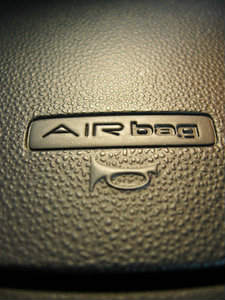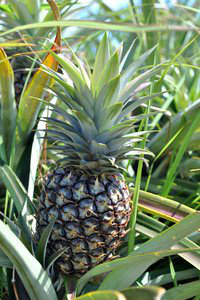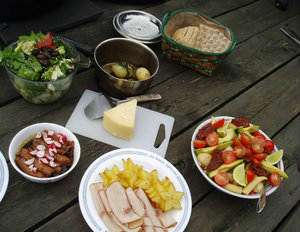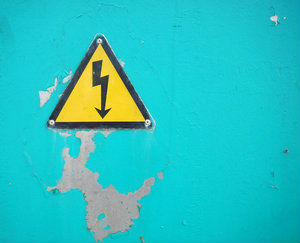This will be Part III of the topic we are discussing here: food, its source, the implications of what happens in the modern system(s) and the safety net at the end of the process, irradiation. As Chaya mentioned in Part II, if someone was texting while driving and was completely fine with doing so because they could just count on an airbag to stop them from killing passengers, you would take notice in a big hurry.

It is true, you can irradiate a multitude of sins and therefore abate them, but how did people eat for thousands of years before electromagnetic cure-alls?
I recently passed by the title, Hungry Planet, What the World Eats, in the library (not a book we sell). These “chance encounters” with interesting books are typically not without consequence for me. My curiosity seems to have a hotline to my inner nerd which loves these kinds of books. My inner nerd then has complete override for my “thrift” sense and I typically end up buying so many good books this way.
In this book, written by Peter Menzel and Faith D’Aluisio, they take on the topic of what different people eat around the world, even different cultures inside of the same country. The book is scientific in a sneaky way, so if you are not into facts and figures you can still walk away from this book with a big advantage to the comparative value from the pictures alone.
I found this link on the web with a nearly complete preview of the book. You can flip through some pages and see the people in the different settings and what they ate for that whole week. Please keep in mind that the authors did this with 30 families in 24 countries—this is no small undertaking!
Try to read this blog with anthropological lenses. People are generally going to eat what is close at hand. If you have ever looked into the Paleo diet, you may recall that the menu choices are largely what you could pick up on your way through the woods. Animal proteins and fats appear high on the list, beans come in below the middle and donuts and squirty cheese in a can dead last. Local food sources means that history has not left us great Inuit recipes for coconuts and the Mayans are not known for their seal cuisine either.
Along the way people probably craved variety in their diets. The earliest ledgers for business transactions may not available, but I would wager that primitive economies were based on food transactions. “Hey, I grow potatoes. I see that your family produces milk—can we trade some of our surplus?” Mutually beneficial exchanges beget economies and societies had the division of labor to move beyond subsistence to development.

With the advent of the merchant class, food was marketed more widely. Today, I can have pineapple in Montana any time of the year. Food has a usable life before it spoils and so expedients were developed to increase food consume-ability. Cooking is a great example of such a revolution in food. Humans do not have the teeth to rip off chunks of raw meat like a dog, nor do we have the necessary enzymes to digest grass like a cow. To this end, some foods are deemed edible after they are cooked (i.e. raw meat, fibrous vegetables, grasses fermented into beer, etc).
Treating food, plant or animal, with high heat changes it, simplifies it, so to speak, so our teeth and gut can deal with it more effectively. In general, it transforms organic matter that, when raw, is unpleasant to eat, difficult or impossible to digest, and unhealthy or even deadly into nourishing and palatable food. On average, chimps spend six hours a day chewing, and people (that is to say members of the cooking species) only one. (Crosby , 2005)
Gathering around the table is something people have taken very seriously over the years as captured in the book Hungry Panet, What the World Eats. Some of the weightiest customs in culture are those dealing with food. At the dinner table we talk about topics of interest, invite our friends over to our house to eat, we contemplate our provisions with gratitude, divide labor for clean up, offer prayers before meals, etc. Look at the activities and traditions leading up to meal time: cleaning, planting, growing, harvesting, hunting, butchering, shopping and possibly traveling. But who wants to impress a guest with raw meat or indigestible grains? This intractable problem was solved with cooking.
“The phenomenon accelerated mightily as our ancestor learned how to increase the proportion of available organic matter that they could digest by inventing cooking” (Crosby, 2005).

“Once humans learned to cook, everything changed. The heat in cooking breaks down the fibrous collagen in meat and the stringy fibers in plants, making chewing easier and providing the luxury of consuming way more calories in far less time. We became ‘cookavores,’ according to Harvard anthropologist Richard Wrangham” (Yoon, 2007).
So what does all of this activity around the dinner table have to do with irradiation? Answer: food safety.
Food safety historically was one of three options: eating it fresh, cooking it or a function of food preservation through various means such as: smoking, salt curing, dehydrating, freezing (seasonally dependent), burying, fermenting, etc. The industrial age changed many things the world over; refrigeration is the biggest thing to happen to food since fire. Refrigerators preserve food by greatly decreasing the rate of decomposition. Food that can last longer can be shipped further. As foods traversed great distances, people no longer knew the producers. With food across political boundaries, I speculate that people wanted legal teeth to protect them against negligence.
In the modern day, the list of activities leading up to the family fuel stop at the table (if the opportunity is taken at all) can be limited to simply shopping or ordering out if need be. For almost a century now, the Federal Government has taken jurisdiction over the chain of custody of the food supply from farm to fork. Since food is produced the way it is, the variables are far too myriad to ensure that everything is safe to eat without the magic bullet of irradiation. What does not get genetically modified or treated with antibiotics can simply be zapped.

Due to the nature of meat and its higher propensity to become spoiled quickly, irradiation does make some semblence of sense. What I cannot understand is why is animal feed irradiated? In nature, the longest shelf life award goes to honey, behind it would be grains and cereals (ostensibly animal feed). So why irradiate them unless the whole food system is so skewed that the only recourse left is to nuke everything as a matter of policy.
As Chaya mentioned in Part I and Part II, the answer is in knowing the local farmer and supporting him/her. Someone you know and from whom you buy food is generally not going to hide behind anonymity or perpetrate negligent food production practices that put you in danger. This transparency in the food system is what is needed to get the system back into balance. A sound Permaculture design is needed on the local level which can scale up from there. This leaves a lot of room for the entrepreneurial farmer to fill needs close to home. I can only guess, but looking at the food that the Farm Bill supports, if backyards produced more gardens instead of lawns, and cows ate more grass instead of corn, the Farm Bill would no longer be a carrot or a stick. Food would be closer, cheaper, safer, healthier, far more transparent, taste better and would not need to be irradiated.
Wilson
Pro Deo et Patria
Essay by Crosby, A. Titled: Baked, Broiled, Roasted and Fried, which appears on page 52 of:
Menzel, P., & D’Aluisio, F. (2005). Hungry planet, what the world eats. (p. 52). Napa: Material World Books. DOI: www.menzelphoto.com
Ibid.
Yoon, H. (2007, January 31). In praise of braise. Retrieved from http://www.npr.org/templates/text/s.php?sId=7061089&m=1
Photo Credits:
Cooking in hearth by mY3Yax8
Airbag by mlllwaW
Pineapple by n6iVOjI
Dinner by mfJ2FOw
Shock by 2dCEQse
